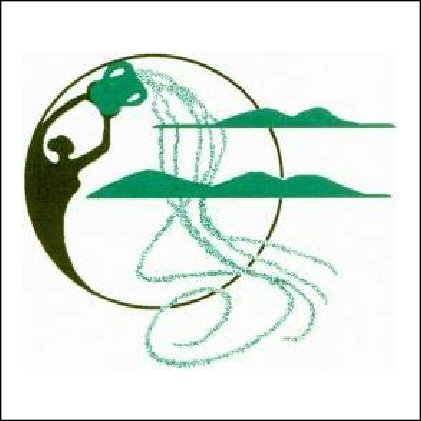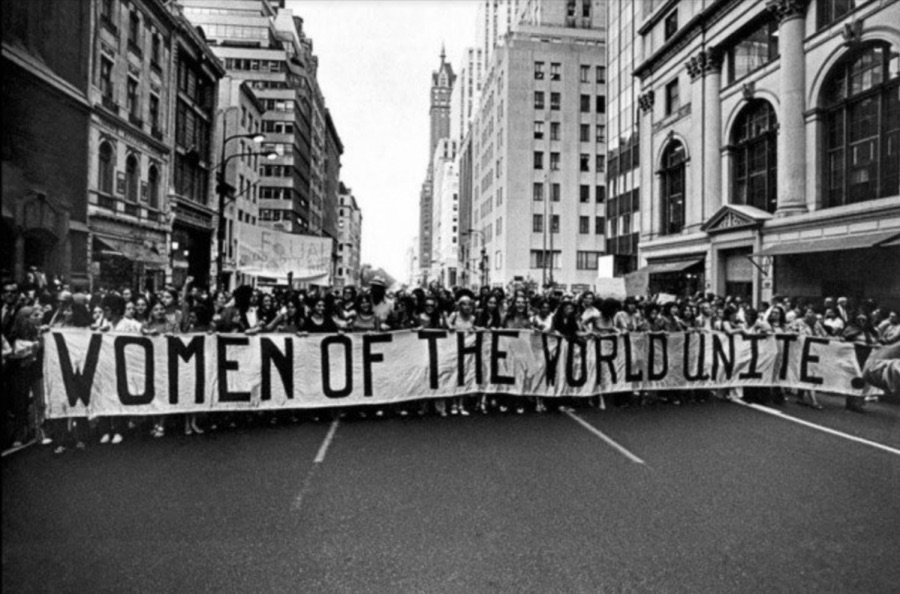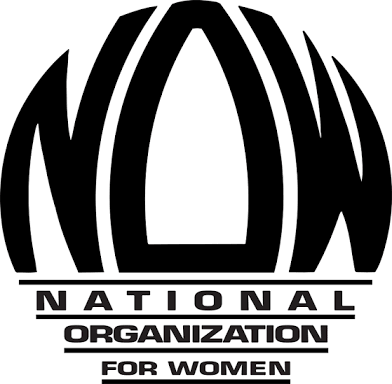ERUPTING INTO A SECOND WAVE - Women Burst into Revolt Again in the 1960s & 1970s
The adage “Knowledge is Power” truly applies in the case of how women fought back in the 1970s and said “NO” to the feminine mystique that Betty Friedan described as the “problem that had no name” in her 1963 book The Feminine Mystique.
The concept of the feminine mystique, which was coined by Friedan, portrayed women's primary role as homemakers and mothers.
Friedan exposed the concept as the manipulation that it was—and believe it or not, still is a manipulation today (discussed below).
When the white, middle-class women who fought for freedom from the housewife role first became aware of their oppression through the lens of Friedan’s book, their anger and passion were so intense that they exploded in a myriad of ways that resonated throughout the country—and changed America!
What did they do?
The women challenged the "feminine mystique" by, most importantly, uniting.
Then they continued by organizing protests, advocating for equal rights, and forming organizations like the National Organization for Women (N.O.W.), which Betty Friedan co-founded.
These actions sparked the second-wave feminist movement.
(First-wave feminists were those who coordinated the Seneca Falls Convention in 1848 and who fought in the 20th century for women’s suffrage.)
How did they do it?
New York City on Fifth Avenue
The women went on strike!
The Women’s Strike for Equality occurred on August 26, 1970 across the nation as a commemoration of the fiftieth anniversary of the passage of women’s suffrage, and to raise awareness about gender discrimination.
Betty Friedan had organized the national event, and N.O.W., the organization she co-founded, had sponsored it.
The largest of the marches occurred on Fifth Avenue in New York City. Friedan was one of the marchers.
Witnesses estimated that over 50,000 women participated in New York. The marchers were very diverse: young and old women; housewives and single women; mothers and daughters; and even men in support of women joined the march.
N.O.W considered it a huge success.
In the 10 years following the publication of The Feminine Mystique, the women also fought back in these ways:
They challenged the status quo:
Friedan’s book sparked a wave of activism and questioning of traditional gender roles, such as “women’s place is in the home.”
They organized for change:
Friedan, along with other activists, co-founded the National Organization for Women (N.O.W.) in 1966, which advocated for equal rights and opportunities for women in all areas of life.
They advocated for Legal Rights:
The movement pushed for legal changes, including the Equal Rights Amendment (ERA), which aimed to ensure equal rights for women under the law.
The N.O.W. Legal Defense and Education Fund was created.
They demanded equal pay and opportunities:
Activists protested against gender-based discrimination in employment, advocating for equal pay for equal work and equal opportunities for women in education and the workforce.
Prior to the 1970s, newspapers routinely used “Help Wanted” ads segregated by gender, which reflected traditional societal gender roles and stereotypes.
Ads seeking males frequently featured positions requiring authority or physical strength, while ads seeking females often focused on support staff roles, with office positions typically labeled “Gal Friday.”
In that time period, women were paid 59 cents for every dollar earned by men for doing the same work.
Golda Meier (1898-1978)
Prime Minister of Israel 1969-1978
This poster of Golda Meier is one of my favorites: It says it all!
They challenged stereotypes:
The movement challenged the societal norms and stereotypes that confined women to domestic roles, promoting the idea that women could and should pursue their own interests and careers.
Feminists staged a sit-in on March 18, 1970, at the Ladies' Home Journal offices, demanding changes in the feminine mystique propaganda of women's magazines.
The Rise of Radical Feminism:
Within the broader movement, radical feminists pushed for a more comprehensive restructuring of society to address gender inequality, often using more confrontational tactics.
An example of radical feminist activism was the 1968 protest at the Miss America pageant, which aimed to highlight the exploitation of women in beauty contests and society as a whole.
1968 Miss America Pageant Protest
Atlantic City, New Jersey
The National Women's Political Caucus
In 1972, Gloria Steinem, Betty Friedan, and other activists formed the National Women's Political Caucus to support gender equality and ensure proper women's representation in political office.
The legacy of The Feminine Mystique was that it drew large numbers of white, middle-class women to the feminist cause.
Other venues took up the charge:
Government and Education:
The Federal Education Amendment Act of 1972, known as Title IX, read:
“No person in the United States shall, on the basis of sex, be denied the benefits of, or be subjected to, discrimination under any education program or activity receiving Federal financial assistance.”
Women’s College Basketball, Madison
Square Garden, 1975
Before Title IX, opportunities for girls and women in sports were severely limited.
Title IX mandated that schools receiving federal funding provide equal opportunities for girls and women in athletics leading to a dramatic increase in participation.
Free Materials
Various organizations developed and offered free materials for educators on sexism in the classroom, for example, boy-girl segregated lining up in the schoolyard.
Photos above are of a free poster from The National Foundation for the Improvement of Education, Washington, D.C.
Textbook Publishing Companies did their part.
These two photos are the cover and first page of a free booklet from Scott, Foresman and Company.
A Small Taste of Other Materials:
Feminist Books for Children
William’s Doll by Charlotte Zolotow tells of a boy who wants his own baby doll. He still wants it even when his father denies it to him because “He’s a boy!” William gets his doll from his grandma who reasons with William’s dad that his son needs it to practice, so that “when he’s a father like you, he’ll know how to take care of his baby.”
Feminist Books for Grown-Ups
Anthologies of feminist writing, edited by Robin Morgan.
Magazines and Media
Newsweek Magazine broke it as the cover story of its March 23,1970 issue.
Full disclosure: The arrival of this magazine was my light in the darkness, sparking in me a readiness for feminist activism.
At that time, I hadn’t heard of Friedan’s book nor even Simone de Beauvoir’s tome. Neither did I know anything about the feminist movement that had been rising.
I did know of an inner sense that I had for many years—that there was a disturbing problem with women’s place in the world—but I had no explicit name for it.
Ms. Magazine, whose premier issue was published in Spring 1972, became the voice of untold voiceless women.
”Free To Me, You and Me” by Marlo Thomas was initially a record album, featuring songs and skits performed by well-known personalities, such as football star Rosy Grier singing “It’s All Right to Cry” by Carol Hall.
The album was published as a book and a CD, and then adapted into a film.
WHO WERE THE KEY MOVERS?
Betty Friedan
1921-2006
Betty Friedan was the author of The Feminine Mystique, which highlighted the dissatisfaction of suburban housewives.
She was co-founder and first president of the National Organization for Women (N.O.W.) and the N.O.W. Legal Defense and Education Fund.
She also co-founded the National Women’s Political Caucus.
Gloria Steinem
1934 -
Gloria Marie Steinem was, at that time in 1970—and still is—a prominent public face of the movement advocating for legislative changes. She was a journalist and co-founder of Ms. Magazine.
Steinem was among the key forces behind the ERA effort in the '70s and '80s. She was also a co-founder of the National Women’s Political Caucus.
Bella Abzug
1930-1998
Bella S. Abzug was an American lawyer, politician, social activist, and a leader in the women’s movement. She was a member of the U.S. House of Representatives from New York, in office from 1971–1977.
In 1970, Abzug's first campaign slogan was, "This woman's place is in the House—the House of Representatives."
In 1971, Abzug joined other leading feminists such as Gloria Steinem, Shirley Chisholm, and Betty Friedan to found the National Women’s Political Caucus.
She was also a leading figure in what came to be known as ecofeminism.
In the last decade of her life, in the early 1990’s, Abzug co-founded the Women’s Environment and Development Organization (WEDO), which is a global women's advocacy organization for a just world that promotes and protects human rights, gender equality, and the integrity of the environment.
WEDO's mission is to advance feminist leadership and solutions towards a just and healthy planet for all.
(Note: Ecofeminism will be addressed shortly in the environmentalist segment of this C:WED series)
Shirley Chisholm
1924-2005
Shirley Anita Chisholm was an American politician who, in 1968, became the first black woman to be elected to the United States Congress, representing New York’s 12th congressional district, which centered in Bedford-Stuyvesant, Brooklyn.
In 1972, she became the first black candidate for a major-party nomination for President of the United States and the first woman to run for the Democratic Party’s presidential nomination.
Throughout her career, she was known for taking "a resolute stand against economic, social, and political injustices", as well as for being a strong supporter of black civil rights and women's rights.
She was also a co-founder of the National Women’s Political Caucus.
BACKLASH!
Unfortunately, the fight WAS not over!
And as long as patriarchy is in play, then:
The fight IS never over!
A backlash will always present ways to halt progress.
1970’s Backlash
A major eruption of the backlash in the 1970s took the form of an attorney named Phyllis Schlafly.
Phyllis Schafly
1924-2016
A nationally prominent American attorney, conservative activist, and anti-feminist, she led the campaign against the Equal Rights Amendment, arguing that it would harm women and traditional family structures.
That was then. This is now.
2024-2025 Backlash
The Phyllis Schafly spirit is resurfacing. It is found in the current Tradwives Movement—the movement that is reimagining and reintroducing the feminine mystique.
The "tradwife" movement is a social media-based subculture that promotes a return to traditional gender roles, with women embracing the domestic sphere and men as providers, often romanticizing the 1950s housewife ideal.
The Phyllis Schafly spirit was also present in recent news during 2024 in the form of references to single women as cat ladies and disparaging comments made about women who have never birthed children.
Here are some questions for reflection:
Do we all—women, men, even boys and girls—have the fight in us that is close to that which the early feminists had?
Has the generation that followed the second-wave of feminism—and also later generations—become so complacent in the years beyond the 1970s, that there is a reliance on the achievements of those years as a right that cannot be taken away?
I believe that deep down within their collective psyche, those women of the second wave (and also of the first) were fighting an existential battle—fighting against the historical views about the female sex that have been in existence for centuries—not just to keep housewives shackled, but to control all women.
Here are a few patriarchal quotes about women to get you started on reflecting—and maybe also stirring up some collective angst:
Saint Thomas Aquinas: “…the female is a misbegotten male.“
Jewish Man’s Daily Morning Prayer: “BLESSED ARE YOU THOU, O LORD OUR G-D, KING OF THE UNIVERSE, WHO HAST NOT MADE ME A WOMAN.”
Rudyard Kipling: “A woman is only a woman, but a good cigar is a smoke.”
…To be continued
C:WED Wish List:
—Please remember us when you are thinking of making a charitable contribution.
—Your gifts, of any amount, will help keep C:WED alive in the digital world!
—Do you have something to send us on our themes: Women, the Earth, and/or the Divine?
—Maybe a quote, a poem, a prayer. a photo or video, a drawing or painting, a cartoon, a short essay, or a resource recommendation?
—Or perhaps just a comment?
We have planned this series to explore two movements—the Women’s Movement and the Environmental Movement—as they exist, and are linked, in a patriarchal world.
We have revised our publishing schedule for this series to one post every week for the next few months.





























